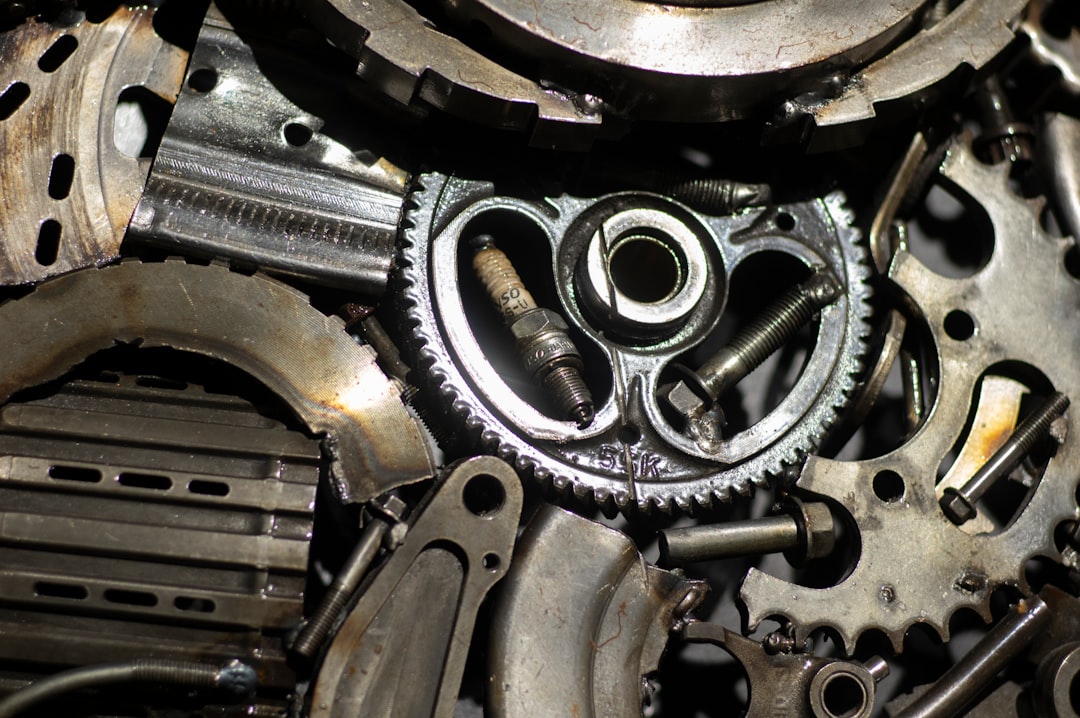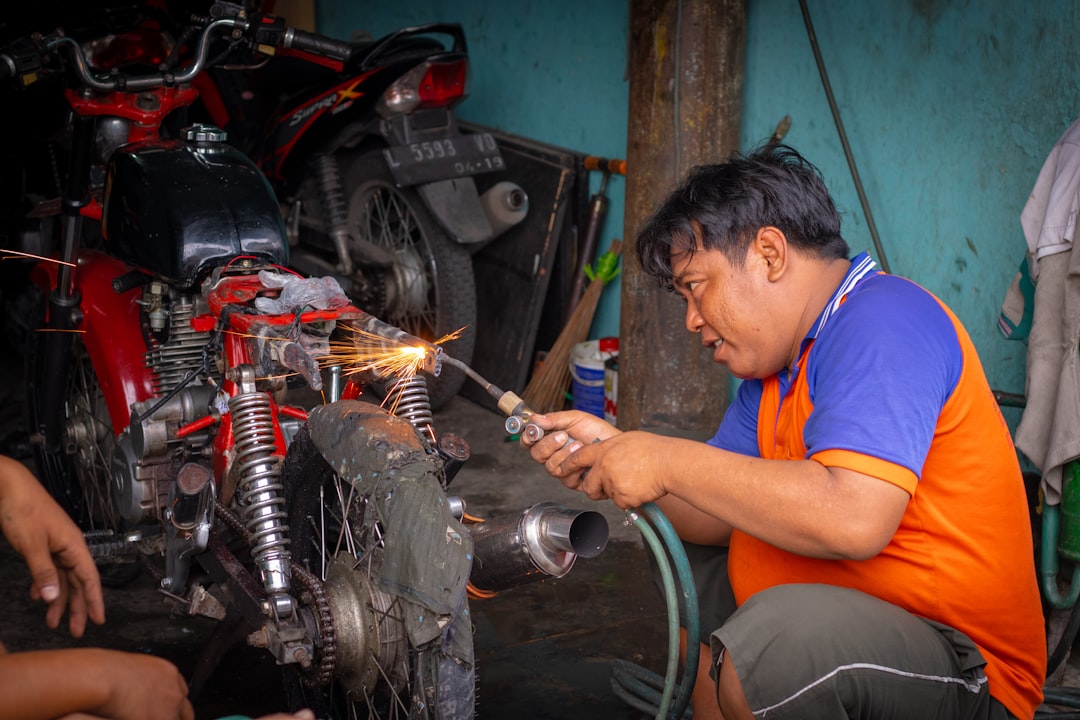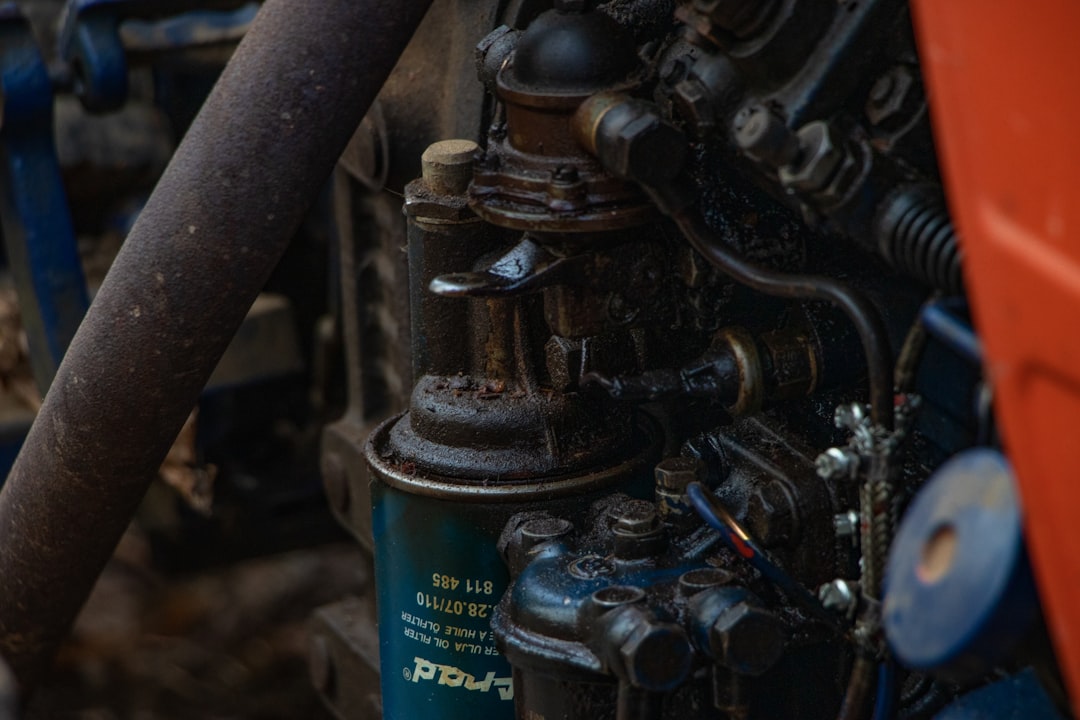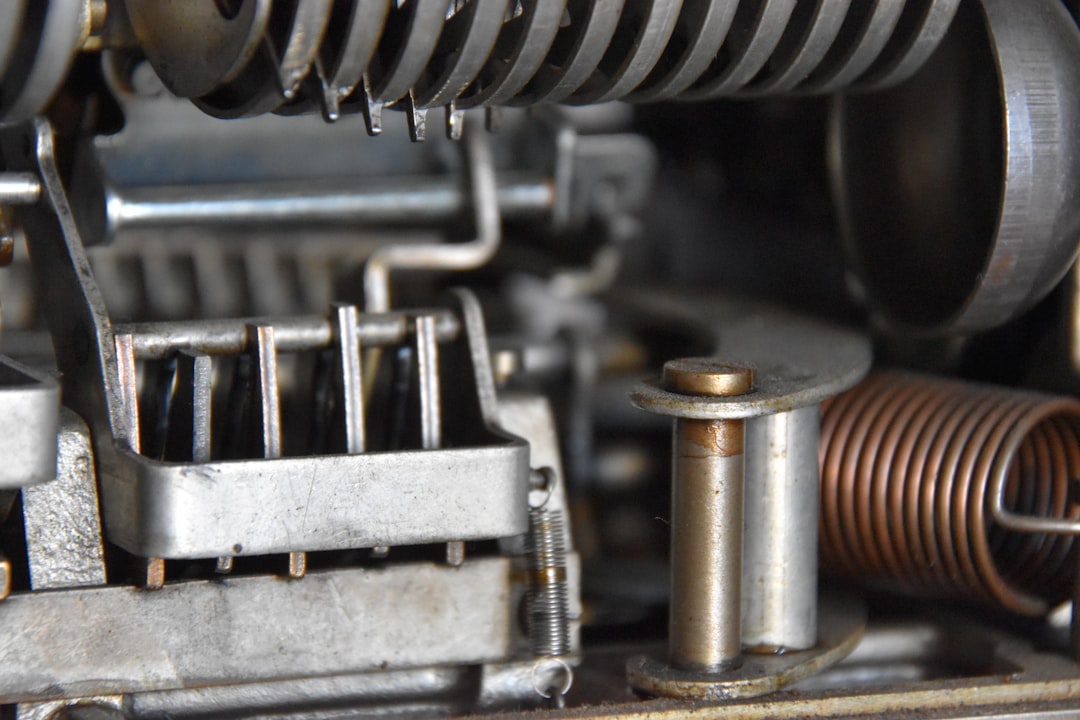

Engage prospects with a scan and streamline customer engagement with FREE QR code marketing tools by Sona – no strings attached!
Create a Free QR CodeFree consultation

No commitment

Engage prospects with a scan and streamline customer engagement with FREE QR code marketing tools by Sona – no strings attached!
Create a Free QR CodeFree consultation

No commitment
Small engine repair services operate in an environment where speed, transparency, and reliability are crucial, yet many shops still battle with disconnected processes and missed opportunities. Homeowners, landscapers, and facilities managers increasingly expect instant access to service updates, maintenance reminders, and expert advice. However, the shift from manual paperwork to digital touchpoints does not always translate smoothly. All too often, critical customer details slip through the cracks: equipment comes in for service without proper tracking, potential high-value clients remain anonymous, and feedback or follow-up cycles are delayed or altogether lost.
Traditional challenges such as generic records, piles of receipts, or missed communications can erode trust and allow better-organized competitors to swoop in. Today, the physical and online worlds no longer need to be siloed. By embedding QR codes on everything from appointment cards and invoices to packaging and shop signage, repair shops can offer real-time access to instructions, tracking, and feedback forms, turning every interaction into a data-driven relationship and operational improvement.
Integrating QR codes tightly into repair workflows enables small engine providers to break down barriers: surfacing anonymous yet interested prospects, capturing timely engagement data, and making every customer touchpoint measurable and actionable. This guide shows how strategic QR codes in marketing not only simplify processes and enhance service, but also close the gaps that cause churn, missed upsells, or lost leads, fueling more revenue and loyalty.

Modern small engine repair shops are under pressure to respond quickly when equipment breaks, yet key information is often trapped in manual logs or goes untracked, leading to missed prospects and slower turnaround. QR codes offer a frictionless gateway for customers and shops to connect, update, and act. They compress the time between noticing a need and getting it addressed, whether that is checking repair status, scheduling pickup, or confirming parts availability. Explore capabilities in the Sona QR product overview.
Replacing analog slow points with QR-enabled touchpoints turns everyday assets into always-on service portals. Instead of waiting on hold or searching through emails, a customer can scan once and get what they need instantly. The shop captures essential context from that same scan, which improves routing, accelerates approvals, and builds a clean record for future service.
Shops seeing the strongest growth make every QR scan a trigger for data capture and actionable follow-up. Even anonymous or casual interactions become pipeline opportunities rather than slipping away unnoticed. The result is a cleaner process for your team and a clearer path for your customers.

Despite best efforts, many repair businesses still experience significant offline-to-online gaps. Customers pick up flyers or receive service invoices that do not tell them what to do next, so they search online and sometimes land on competitors. Meanwhile, leads are not recorded, questions go unanswered, and upsell chances disappear in the paperwork. QR codes address these recurring issues by creating simple, immediate bridges between physical materials and digital actions, as seen in Briggs QR codes.
For a local shop, the difference between a well-placed QR code and a missed connection can be a week’s worth of bookings. Appointment cards, estimate forms, and shop signage become interactive channels where customers can book, confirm, or learn in seconds. You reduce friction for your customers and you gain visibility into who is interacting with your brand and why.
When every printed asset becomes a portal to a real-time experience, you create a connected journey that customers trust and choose repeatedly. That predictable experience translates into higher retention and more effective marketing.

The range of QR code types available means shops can target pain points across intake, service, pickup, and retention. Picking the right format for the right job is how you keep customers moving smoothly and your team working efficiently. The most useful formats in small engine repair tend to be those that enable quick actions like booking, logging, and contacting support.
Start by identifying your most frequent bottlenecks. If customers struggle to reach your front desk, a vCard or SMS code can help. If you need to drive adoption of a maintenance guide, a web link QR is best. If you have a customer Wi-Fi network in your waiting area, a Wi-Fi QR code reduces friction. Tools like Sona QR make it simple to generate and manage each type in one place.
Dynamic QR codes are recommended for most campaigns. They allow you to change destinations as workflows evolve and unlock analytics for segmenting and retargeting. Static codes work for evergreen resources like a basic contact page or an OSHA safety sheet.
Growth in small engine repair often hinges on converting fleeting in-person interactions into actionable data. Customers visit to drop off equipment, pick up parts, or ask a quick question. With no system to capture those moments, engagement becomes invisible. QR codes turn these moments into leads, insights, and scheduled work that keeps your bays full.
Think of the surfaces and handoffs that already exist: invoices, tags, packaging, signage, and mailers. Each can contain a precise call to action and a trackable path into your CRM. When you combine clear messaging with smart placement, you reduce the chances that post-service needs or upgrade opportunities go unaddressed.
Embedding QR codes in these touchpoints enables targeted retargeting and intent-driven outreach. When scan events flow into your CRM and marketing tools, you can recover high-value leads that would otherwise remain invisible.

Missed and delayed customer engagement frequently reduces revenue per client. This happens when customers find it hard to get updates, or when shops forget to prompt for the next visit. QR workflows solve both sides of the problem. They give customers instant answers, and they give shops immediate context about who is engaging and what they need.
By mapping common interactions to QR-enabled actions, you reduce support tickets and create a steady drumbeat of bookings. From the first scan to the final review, each touchpoint nudges the customer along a path that is easy to follow and easy to measure.
Advanced QR platforms can automate these flows end-to-end. When a scan occurs, forms can pre-fill known fields, follow-up emails can deploy automatically, and CRM records update without manual entry.
A persistent challenge for small engine repair shops is the lack of usable audience segmentation. Contact records are incomplete, and broadcasts go to everyone with the same message. QR scans change this because each scan carries context: where it happened, why it happened, and what came next. That context lets you group people by intent and tailor your outreach so it resonates.
By deploying multiple QR codes across intake, service, and pickup, you can construct intent-based segments that map to your lifecycle. A first-time inquirer should receive educational content and a new customer discount. A frequent parts buyer should see bundle offers and proactive maintenance plans. Retargeting becomes relevant rather than repetitive.
With Sona QR, each code becomes a smart entry point into your funnel that captures data you can use immediately. Landscaping crews vs. homeowners, urgent repairs vs. preventative tune-ups, warranty owners vs. out-of-warranty prospects, all become distinct audiences that you can serve with relevant offers.
QR codes are the connective tissue that bring your offline presence into your digital engine. Shops invest in flyers, vehicle wraps, yard signs, and counter materials, yet the performance of these assets is often a mystery. Add a QR code and a clear call to action, and suddenly you know which placements drive inquiries and which messages spur action. Use vehicles to extend reach beyond the shop.
The payoff is not only in attribution but also in speed. A handout that once required a phone call now triggers a booking with one scan. A window sign that was seen but forgotten now becomes a trackable lead. When every campaign has a scannable next step, your marketing mix works together rather than in silos.
A centralized platform like Sona QR lets you manage codes across channels, monitor performance in real time, and sync scan data with your CRM. That means fewer missed handoffs and a clearer view of ROI.
Many shops struggle to turn QR ambitions into practical results. The most common issues are generic codes with vague destinations, inconsistent CTAs, and no analytics. A focused, repeatable process solves this by aligning QR use with concrete business outcomes, improving scan rates, and enabling continuous optimization.
Use the steps below to plan, deploy, and refine your initiatives. Keep the scope tight for your first campaign, then expand to more placements as you learn what works in your market.
Define what success looks like. Pick one high-impact goal tied directly to revenue or retention, such as booking spring mower tune-ups, capturing after-hours repair requests for generators, or increasing post-service reviews for reputation building.
Choose static for unchanging resources or dynamic for campaigns you plan to optimize. For most marketing and service flows, use dynamic so you can edit destinations and track performance without reprinting.
A QR code is only as effective as its visibility and clarity. Your goal is to make the benefit obvious and the scan effortless.
Place your codes where your audience already is, and match CTAs to the environment. A code on a vehicle wrap needs a short, memorable CTA and a large print size. A code on an invoice can be smaller and more specific.
Treat scans as the start of a measurable journey. Use analytics to see which placements and messages convert, then iterate to improve.
Relying solely on scan totals does not show which campaigns actually move the needle. Without downstream visibility, shops cannot justify new investments or optimize their mix. Modern analytics tools solve this by linking scans to outcomes such as scheduled service, parts purchases, and review submissions.
The analytic chain starts when a code is scanned and continues through booking, arrival, payment, and feedback. When these touchpoints are connected, you can answer which codes produce revenue, which just create curiosity, and how to prioritize your time. This is the foundation for performance-driven operations in a local service business.
Sona QR captures real-world engagement and Sona.com turns that engagement into insights you can act on. Together they help you connect scans to revenue and make QR codes a reliable part of your performance marketing strategy.
Even well-designed QR initiatives can stall without deliberate follow-through. Success depends on clean data, fast responses, and frontline teams that understand how to present QR options as customer benefits. High-performing shops treat QR codes as a service feature that saves time and keeps equipment in service longer.
When you scale your efforts, keep your systems tidy. That means unique codes by placement, clear labeling, and consistent UTM parameters. When you respect the data, you can identify what to scale and what to sunset with confidence.
Start creating QR codes for free with Sona QR. Set up campaigns in minutes, connect to your CRM, and start measuring which touchpoints move customers to action.

Missed follow-ups and anonymous browsing cost small repair shops real money. Creative QR strategies close those gaps by inviting action at the precise moment a customer is most likely to engage. Think about the journey from curb appeal to counter conversation to at-home maintenance. Each phase can benefit from a simple, scannable next step.
The goal is not to cover everything with QR codes. The goal is to make the essential next step obvious and effortless. The best ideas often come from observing where customers hesitate and asking how a single scan could solve that hesitation.
By monitoring which placements and campaigns yield the most return, shops learn where traditional processes have left value on the table and how data-driven QR engagement recovers it.
QR codes unlock measurable access, yet real-world execution matters. Scannability, message clarity, and destination quality are make-or-break factors. Experts recommend treating each code like a mini product: it needs a clear value proposition, easy access, and a simple path to success.
Common mistakes include burying codes in low-light areas, pointing scans to desktop-heavy pages, or failing to follow up when customers show intent. Each of these undercuts the promise of speed and convenience. A small adjustment to placement or content can double scan rates and conversions.
Industry leaders consistently report that integrating QR scanning into daily workflow compresses follow-up times and reveals seasonal patterns. The insights guide staffing, inventory planning, and promotional timing for better outcomes.
By embedding QR technology throughout their operations, small engine repair services overcome longstanding pain points like lost leads, incomplete outreach, and missed upsell chances. Every scan is more than just a digital handshake, it is an opportunity to seamlessly gather customer insights, strengthen loyalty, and make workflows smarter at scale. When QR-powered processes are integrated thoughtfully, repair shops transform day-to-day convenience for customers into actionable business value, sustaining growth in an ever-demanding market.
In practical terms, this means installing codes where they will be seen, connecting them to tasks customers already want to do, and using analytics to measure real results. Start with one or two high-impact use cases, like intake and reviews, then expand to parts packaging, signage, and direct mail as you learn what resonates. With Sona QR for code management and Sona.com for attribution, you can capture demand at the source and connect it to revenue with confidence. For deeper context, read Sona’s blog post titled The Importance of Accurate Revenue Attribution.
QR codes have revolutionized small engine repair services by transforming traditional service interactions into seamless, data-driven engagements. Whether it’s simplifying access to repair manuals, enabling instant service scheduling, or providing easy parts ordering, QR codes enhance customer convenience and boost operational efficiency. Imagine customers scanning a code on their equipment to instantly access troubleshooting guides or book appointments—streamlining the repair process and increasing satisfaction.
With Sona QR, you can create dynamic, trackable QR codes in seconds, update content instantly without reprinting, and link every scan directly to valuable customer insights and revenue opportunities. No more guesswork—just smarter service delivery and stronger customer relationships.
Start for free with Sona QR today and turn every scan into a faster repair, a happier customer, and a growing business.
QR codes provide real-time access to service updates, enable digital workflows, improve customer engagement, capture leads, and help track marketing effectiveness in small engine repair services.
QR codes allow customers to quickly check repair status, schedule services, access parts information, and submit feedback without waiting or calling, streamlining communication and transparency.
Challenges include disconnected manual processes, missed customer details, lost leads, delayed follow-ups, and difficulty tracking offline-to-online interactions, all addressed by QR code integration.
By placing QR codes on parts packaging, receipts, and signage that link to parts lookups, quotes, and booking forms, shops simplify ordering and encourage repeat maintenance appointments.
Web link QR codes for booking and info pages, vCards for contact saving, SMS or email action codes for quick requests, app download codes, and Wi-Fi access codes are commonly used and effective.
Dynamic QR codes allow shops to update destinations without reprinting materials, track scan analytics, segment audiences, and optimize campaigns based on real-time data.
Effective placements include appointment cards, invoices, parts packaging, shop signage, vehicle wraps, flyers, postcards, and equipment tags to capture interest and drive action.
Define the business goal, choose the right QR code type, design and test for visibility, deploy across relevant channels, then track scans and optimize based on analytics.
Scan data reveals customer intent, peak engagement times, and channel effectiveness, enabling better staffing, inventory planning, targeted outreach, and revenue attribution.
Use clear, visible codes with strong calls to action, link to mobile-optimized pages with simple actions, automate follow-ups, train staff to promote QR benefits, and maintain unique codes per placement.
Use Sona QR's trackable codes to improve customer acquisition and engagement today.
Create Your FREE Trackable QR Code in SecondsJoin results-focused teams combining Sona Platform automation with advanced Google Ads strategies to scale lead generation

Connect your existing CRM

Free Account Enrichment

No setup fees
No commitment required

Free consultation

Get a custom Google Ads roadmap for your business






Launch campaigns that generate qualified leads in 30 days or less.
